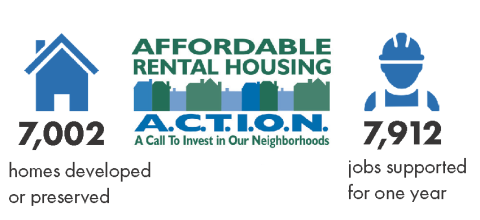New estimates from the ACTION Campaign demonstrate the significant impact that the Low-Income Housing Tax Credit has had in Vermont, including creating and preserving over 7,000 affordable homes since 1986 and supporting nearly 8,000 jobs per year.

The Low-Income Housing Tax Credit is the largest source of funding for publically-assisted housing development. These federal tax credits are awarded by the Vermont Housing Finance Agency (VHFA) to developers, who sell the credits to raise capital for construction. In exchange, developers set aside apartments for low-income households. These apartments are roughly affordable to households earning less than $40,000, for a family of four. The program has created over 3 million affordable housing units nationwide since it began in 1986.
The program is also an important source of economic development for Vermont, generating $296 million in local income and $754 million dollars in tax revenue stemming from the construction of the homes.
However, 39,000 Vermont households still pay over half their income towards housing costs. This makes it extremely challenging to afford other basic necessities like transportation, healthcare, childcare, and food. Most of the low-income households in Vermont do not receive housing assistance, from this or other housing programs.
The ACTION Campaign (A Call To Invest in Our Neighborhoods) has released a fact sheet providing these figures. VHFA is a proud member of the campaign, which is a national coalition of over 2,200 national, state, and local organizations and businesses that have joined to call on Congress to protect and expand the Low-Income Housing Tax Credit.
Currently, ACTION is supporting the bipartisan Affordable Housing Credit Improvement Act, which would expand the program by 50% over five years, as well as by providing states with additional flexibility in tax credit allocation, streamlining financing, assisting development in rural communities, and supporting the preservation of existing affordable housing. According to ACTION, a 50% increase to the program would allow 903 additional affordable homes to be built in Vermont over the next ten years.
In addition to state fact sheets, ACTION provides a variety of resources to support advocacy, including letter-writing campaign materials, reports on pending legislation, and a list of other campaign members in Vermont.
